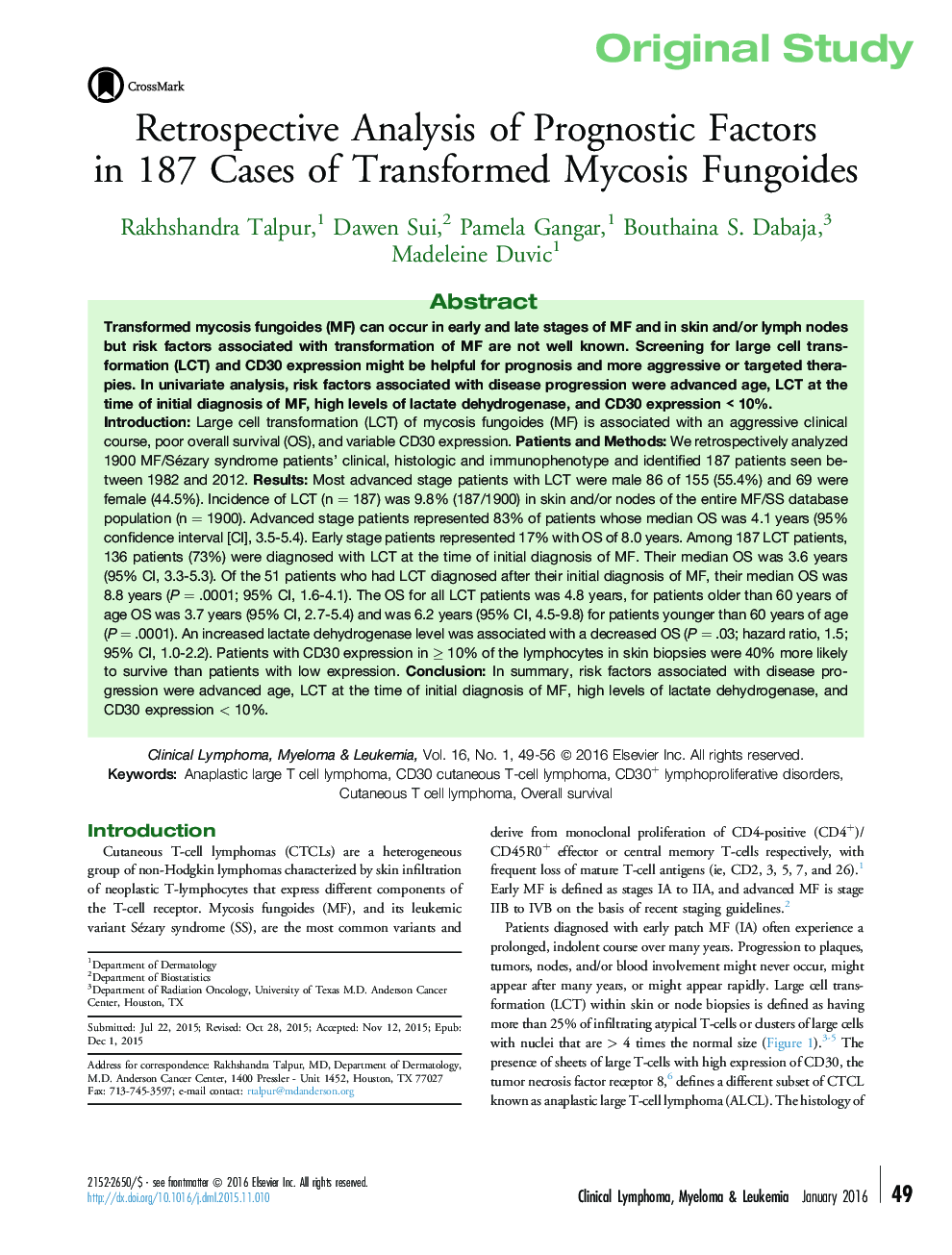| Article ID | Journal | Published Year | Pages | File Type |
|---|---|---|---|---|
| 5882873 | Clinical Lymphoma Myeloma and Leukemia | 2016 | 8 Pages |
IntroductionLarge cell transformation (LCT) of mycosis fungoides (MF) is associated with an aggressive clinical course, poor overall survival (OS), and variable CD30 expression.Patients and MethodsWe retrospectively analyzed 1900 MF/Sézary syndrome patients' clinical, histologic and immunophenotype and identified 187 patients seen between 1982 and 2012.ResultsMost advanced stage patients with LCT were male 86 of 155 (55.4%) and 69 were female (44.5%). Incidence of LCT (n = 187) was 9.8% (187/1900) in skin and/or nodes of the entire MF/SS database population (n = 1900). Advanced stage patients represented 83% of patients whose median OS was 4.1 years (95% confidence interval [CI], 3.5-5.4). Early stage patients represented 17% with OS of 8.0 years. Among 187 LCT patients, 136 patients (73%) were diagnosed with LCT at the time of initial diagnosis of MF. Their median OS was 3.6 years (95% CI, 3.3-5.3). Of the 51 patients who had LCT diagnosed after their initial diagnosis of MF, their median OS was 8.8 years (P = .0001; 95% CI, 1.6-4.1). The OS for all LCT patients was 4.8 years, for patients older than 60 years of age OS was 3.7 years (95% CI, 2.7-5.4) and was 6.2 years (95% CI, 4.5-9.8) for patients younger than 60 years of age (P = .0001). An increased lactate dehydrogenase level was associated with a decreased OS (P = .03; hazard ratio, 1.5; 95% CI, 1.0-2.2). Patients with CD30 expression in ⥠10% of the lymphocytes in skin biopsies were 40% more likely to survive than patients with low expression.ConclusionIn summary, risk factors associated with disease progression were advanced age, LCT at the time of initial diagnosis of MF, high levels of lactate dehydrogenase, and CD30 expression < 10%.
